Ensemble
Donate
Newsletter
Follow US
2006-05-14: Tomoko's Amsterdam Sound and Vision


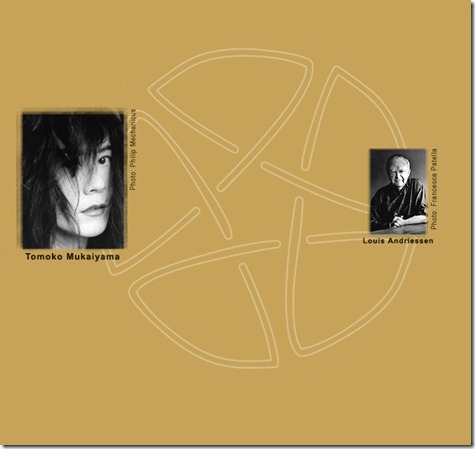
Tomoko's Amsterdam Sound and Vision
Hal Hartley and Louis Andriessen: Auteur Meets Composer
One of Amsterdam's foremost pianists, Tomoko Mukaiyama, guides SCP through today's Netherlands where performers, film and boombox meet.
SPECIAL GUESTS
Christian Knapp, conductor
Maureen McKay, soprano
Mahmoud Abu-Eid, trombone
Matthew Kocmieroski, percussion
Sid Law, electric guitar
Jonathan Green, contrabass
PROGRAM
Michel van der Aa
Memo for violin solo and portable cassette recorder
Yannis Kyriakides
Tinkling for piano solo, flute, clarinet, violin, cello, trombone, percussion, double bass, and electric guitar (world premiere of a new version created for SCP)
Jacob ter Veldhuis
Tatatata for cello solo and boombox
Louis Andriessen
The New Math(s), film with soprano, percussion, flute, violin and electronics
(film directed by Hal Hartley; electronic inserts by Michel van der Aa)
(intermission)
Tomoko Mukaiyama
haar/haar (her/hair), piano with live video
A sixty-minute piece that involves video projection on two screens adjacent to the piano, a pre-recorded soundtrack that interacts with the live piano and musical sources that range from Bach and Beethoven to Ligeti and Thelonious Monk, the work is a self-described "Sonic Labyrinth, or a Forest, which interlaces various piano pieces through the 400 year history from Baroque to contemporary."
Concept: Tomoko Mukaiyama
Video: Tomoko Mukaiyama
Sound track and noise: Michiel Mensingh/Tomoko Mukaiyama
Video editing: Menno Boerema
PROGRAM NOTES
by Dr. Elena Dubinets
Tomoko's Amsterdam - Sound and Vision
Hal Hartley and Louis Andriessen: Auteur Meets Composer
Michel van der Aa (1970) completed his training as a recording engineer at the Royal Conservatory in The Hague and studied composition with Louis Andriessen. In 2002 van der Aa completed a program in film directing at the New York Film Academy. His style is strikingly subtle, playful, poetic, and transparent but not, however, expressive or melodious in the traditional sense. His music has an idiomatic sense for the stage, combining sounds and scenic images in a play of changing perspectives. Dramatic personages take on various identities or have an alter ego: musicians on the stage, not always audible, mime or lip-sync with their electronic counterparts on soundtrack. Van der Aa is in fact a playwright in music. His sounds-like real people-can be flexible or stubborn: they either take control or get the short end of the stick; they reinforce or counteract each other, affecting audiences with their expressive power.
Van der Aa's music has been performed by ensembles and orchestras worldwide. He has collaborated with several choreographers and with film directors Hal Hartley and Peter Greenaway.
Michel van der Aa was the first Dutch composer to win the prestigious International Gaudeamus Prize (in 1999). In 2004 Van der Aa won the Matthijs Vermeulen prize for his opera One. The Ernst von Siemens Foundation awarded him a Siemens Composers Grant in 2005. Also in 2005, Michel van der Aa was awarded the Charlotte Köhler Prize for his directing work and the interdisciplinary character of his oeuvre.
Memo (2003) for violin solo and portable cassette recorder
Memo is a theatrical solo work for violin. The violinist records him/herself with a small cassette recorder and then plays along with it.
Yannis Kyriakides was born in Limassol, Cyprus in 1969, and as a result of the Turkish military occupation in 1974, emigrated with his family to Britain. After traveling for a year with his violin in the Near East, learning traditional music, he returned to England to study musicology at York University, later being drawn to move to the Netherlands by the music of Louis Andriessen, with whom he studied at The Hague Conservatory. As a composer, Kyriakides strives to create new forms and hybrids of media, synthesizing disparate sound sources and exploring spatial and temporal experience. He has focused, in the majority of his work, on ways of combining traditional performance practices with digital media. The sensory space where music happens is a particular preoccupation, and for this end he seeks a way of bypassing the conventional structures of how music is presented. The question of what music is actually communicating is also a recurring theme in his work, and he is often drawn to the relation between emotion and language and how that defines our experience of music.
Kyriakides has written over fifty compositions. In September 2000 he won the Gaudeamus composition prize. Together with Andy Moor and Isabelle Vigier, he founded and runs the CD label for innovative new electronic music UNSOUNDS. Current teaching activities include 'visiting lecturer' at Birmingham Conservatory (U.K.) and 'composer in residence' at HKU, Utrecht School of the Arts (Netherlands).
Tinkling (killing time in an airport lounge and being arrested) (2003) for piano and ensemble
This composition is a reworking and arrangement of material written for the Maarten Altena Ensemble in 1999 (Tinkle Spin Out). It is a 'fantasie' on a Thelonius Monk riff from the piece Trinkle Tinkle. The idea of the piece comes from a scene in the documentary Straight No Chaser, where Monk is seen spinning around like a whirling dervish in an airport space. In Boston Monk once wandered around the airport until the police picked him up and took him to Grafton State Hospital for a week's observation. He was quickly released without strings, and though the experience persuaded him never to go out on the road alone again, he used to tell it as a certification of his sanity. "I can't be crazy," he used to say with conviction, "cause they had me in one of those places and they let me go".
-Yannis Kyriakides
Jacob ter Veldhuis (1951) began his career in rock music and studied composition and electronic music at the Groningen Conservatory, where he was awarded the Dutch Composition Prize in 1980. During the eighties he made a name for himself with melodious, heartfelt compositions; music that does not eschew effect and, without being sugary or contrived, gratifies the ear. Ter Veldhuis makes superb use of electronics, creating a colorful mix of 'high' and 'low' culture.
Various choreographers have been inspired by his music.
A controversial figure in certain circles, ter Veldhuis dares to stand up to what he calls the 'washed-out avant-garde.' He strives to liberate new music from its isolation by employing a direct, at times provocative, idiom that spurns 'the dissonant'-in ter Veldhuis' view a completely devalued means of musical expression. His 'coming-out' as a composer of ultra-tonal, mellifluous music reached its climax with the video oratorio Paradiso, released 2003 on CD and DVD by Chandos. At the Holland Festival 2005, the premiere of ... NOW... by the Royal Concertgebouw Orchestra received standing ovations.
Tatatata (2000) for cello solo and boombox
Some years ago I discovered a sound recording of an old man reminiscing about when as a child he met the French poet Guillaume Apollinaire. It was shortly after the First World War and Apollinaire took the little boy on his knee and sang a military tune, something like 'tatatata.' This recording, a sample lasting no more than five seconds, formed the basis of a composition I wrote in February 1998 for cellist René Berman. The sound fragment was expanded and compressed in a sampler by means of time stretching and it turned out to be full of unsuspected musical qualities. The apotheosis is reached when in the final bars the voice of Apollinaire comes from a creaking old phonograph, reciting one of his most famous lines: 'vienne la nuit, sonne l'heure.'
-Jacob ter Veldhuis
Tatatata
Ta ta ta ta
Ta ta ta ta
Ta ta ta ta
Ta ta ta ta
Ta ta ta ta
Ta ta ta ta
Ta ta ta ta etc.
Vienne la nuit, sonne l'heure
Louis Andriessen (1939) is considered to be the foremost Dutch composer working today. He was born into a musical family, being the son of the composer Hendrik Andriessen. He studied at the Royal Conservatory of The Hague before embarking upon two years' study with Italian composer Luciano Berio in Milan and Berlin. Since the early 1970s, Andriessen has refused to write for conventional symphony orchestras and has instead opted to write for his own instrumental combinations, which often retain some traditional orchestral instruments alongside electric guitars, electric basses, and congas. He helped to found the instrumental groups De Volharding, Hoketus, Schönberg Ensemble, and Asko Ensemble.
Andriessen's music combines propulsive energy, economy of material, and distinctive sonorities, often dominated by pungent winds and brass, pianos and electric guitars. He has explored, in relation to music, the subjects of politics, time, velocity, matter, and mortality in five works for large ensemble. His works combine the strong influence of Stravinsky alongside American minimalism. He has also played an important role in providing alternatives to traditional performance practice techniques through often specifying forceful, rhythmic articulation and amplified, strictly nonvibrato, singing.
The New Math(s) (2000) for soprano, percussion, flute, and violin; with video
Louis Andriessen and independent director Hal Hartley's film is about mathematics and fun. At the centre of the action is a mathematical equation on a blackboard, with a teacher and two students in dispute over its meaning. Their conflict is expressed through movement, fighting turned into a kind of dance, filtered through Hong Kong kung fu movies and early expressionist cinema. Time stands still, the music chases itself, the characters chase each other, through the building and onto the roof.
The film The New Math(s) was commissioned by the BBC (UK), in cooperation with the NPS (The Netherlands) in 1999-2000. Four composers (Louis Andriessen, John Tavener, Karlheinz Stockhausen, and Adrian Utley of Portishead) were each asked to choose a filmmaker to work with on a short film. Louis Andriessen and New York film director Hal Hartley (The Unbelievable Truth, Flirt, Simple Men) are together part of this large-scale project initiated by the BBC. The result of this collaboration is The New Math(s).
Notes by the composer:
The music is written for ELECTRA. It consists of three 'catches' plus an introduction, for flauto traverso, violin, percussion and soprano. The catches, English sixteenth-century canons, are a formal allusion to one of the themes of the film: the pursuit. Each catch is faster than the preceding one. This will be reinforced by the tape part, where besides instrumental material a clock is used, played by the percussionist, plus the sound of a tapdancer. The tapdance rhythm is an allusion to the 1930s references in the film. The tape part was composed and created by Michel van der Aa.
-Louis Andriessen
Text
Catch 1
Why cannot the Ear be closed to its own destruction?
Or the glistening Eye to the poison of a smile!
Why are Eyelids stor'd with arrows ready drawn,
Where a thousand fighting men in ambush lie?
Or an Eye of gifts and graces, show'ring fruits and coined gold!
Catch 2
Why a Tongue impressed with honey from every wind?
Why an Ear, a whirlpool fierce to draw creations in?
Catch 3
Why a Nostril wide inhaling terror and affright?
Why a little curtain of flesh on the bed of our desire?
Tomoko Mukaiyama was born in Japan, studied in Tokyo, Indiana and Amsterdam, and is now living and working in Amsterdam. She made her debut recital in Japan in 1990 and won the International Gaudeamus Prize in 1991, which brought her invitations for solo recitals and concert appearances in Europe, Asia, and America. She won Japan's Muramatsu Prize in 1993.
Mukaiyama's unique approach to the piano in which she employs her voice and body has inspired many composers including Frederic Rzewski, Louis Andriessen and Alexander Raskatov. As a result, many pieces have been composed and dedicated to her. She has been invited to perform with Ensemble Modern, London Sinfonietta, Ensemble Intercontemporain, and the Rotterdam Philharmonic Orchestra. She has collaborated with cinematographers, designers, architects, dancers and photographers, such as Ian Kerkhof, Marina Abramovic, MERZBOW, and Kim Ito. Mukaiyama's original style of expression using video and sculptural installations has opened new musical frontiers.
In recent years, Mukaiyama has been focusing on fostering the younger generation by offering workshops and serving on the jury at the International Gaudeamus Competition. Her recent project for you, which is a unique piano recital for an audience of one, has been performed in Haarlem, Tokyo, Hokkaido, Toronto and Amsterdam, and has been receiving an enthusiastic response. In the 2005-2006 season her first video installation performance, haar/haar (her/hair), premiered in the Aichi Art Center in Nagoya.
As a concert pianist, Mukaiyama has been invited to perform with the Royal Concertgebouw Orchestra, Boston Modern Orchestra Project and the Tokyo City Philharmonic. She also appears as guest artist in Yokohama Triennale and Sydney Biennale.
haar/haar (her/hair) live video installation performance
Hair (haar) is the symbol of the energy of life and the beauty of the body.
Hair (haar) is a part of the body, but growing with its own energy beyond the intention.
Hair (haar) has no shape.
This is the invitation from her (haar) to the forest - sonic tapestry.
Tomoko Mukaiyama is always particular about the "style" of her performance. This program, "Sonic Tapestry II," is played in the "style" of interspersing ad-libs with a variety of music, together with images and noises.
The subtitle concept "haar/haar (her/hair)" is realized through the "collaboration between technology, piano and body." On the two big screens there are projected images created by Mukaiyama herself. However, "something" is projected on the screens for only a few minutes. The images are not intended to produce a direct effect, such as addition of a different dimension through visual stimulation.
In "Sonic Tapestry II", there is no structural time flow in which a piece of music is born, grows and ends within a certain time frame. This style corresponds with the fact that the visual images of "her/hair" have no spatial impression.
Mukaiyama intentionally leaves the time experience incomplete by her consecutive sixty-minute performance. The beginning, progression and ending of the performance are experienced by the fact that she appears on the stage, the fact that her muscles are brutally vibrated by the intense performance, and the fact that she then disappears. What is impressed upon the viewer is not a time experience of music, but a spatial experience created by Mukaiyama's presence and absence. SPACE is created by a dispersed auditory time, whereas TIME is sensed by the visual element of silent images. This can be named the "parameter exchange" between time and space.
-Mikako Mizuno
GUEST PERFORMER BIOS
Mahmoud Ayesh Abu-Eid, trombone
Born in Riyadh, Saudi Arabia, Mahmoud Abu-Eid served as the Principal Trombonist of the Seattle Symphony in 2004-2005; prior to this, he was the Symphony's Second Trombonist for two seasons. During his time with the Seattle Symphony, Mahmoud also performed with the Seattle Opera, including Wagner's Ring cycle in the summer of 2005. Earning both his Bachelor's and Master's degrees from the Juilliard School, Abu-Eid has performed with other orchestras around the country, including the St. Louis Symphony, Lyric Opera of Chicago, Washington D.C. Opera, Pacific Northwest Ballet Orchestra, and Buffalo Philharmonic. In the summer of 2001, he won second prize at the Lewis Van Haney Philharmonic Competition at the International Trombone Festival. Abu-Eid's professional experiences have taken him all over the world: to countries including Japan, Italy, and Austria, and to venues such as Carnegie Hall, Avery Fisher Hall, and Radio City Music Hall. He has performed with pop artists Elton John and Ray Charles and can be heard on numerous commercials, CDs, video games, and motion picture soundtracks.
Jonathan Green, double bass
Jonathan Green joined the Seattle Symphony as Assistant Principal Bass in 1998. Before moving to Seattle, he performed with the San Diego Symphony for eleven seasons, including three years as Principal Bass, the San Antonio Symphony and the Tulsa Philharmonic. He has also performed at the Icicle Creek Music Festival, Sedona Chamber Music Festival, Colorado Music Festival in Boulder and La Jolla Chamber Music Society's Summerfest.
Christian Knapp, conductor
Christian Knapp has performed in festivals and concerts throughout the world conducting the St. Petersburg Philharmonic, New World Symphony, Indianapolis Symphony, Western Australia Symphony Orchestra and the Chicago Civic Orchestra among many others. Currently the Douglas F. King and 2005-2006 Bruno Walter Memorial Foundation Associate Conductor of the Seattle Symphony, he has performed extensively with the Orchestra in more than 60 performances to great critical acclaim, leading them on tour and collaborating with such renowned artists as Mstislav Rostropovich, Itzhak Perlman, Nadja Salerno-Sonnenberg, Vinson Cole, Cecile Licad and Pepe Romero.
Knapp was Associate Conductor of Broomhill Opera in London and its sister company in South Africa from 2000-2003. Operas he has conducted include Turn of the Screw, Rake's Progress, The Marriage of Figaro, Carmen,Der Silbersee and Il trittico. An active conductor of new music, he has worked with the Perspectives New Music Ensemble in London, ICE Ensemble and the Seattle Chamber Players. Knapp has been an assistant for the Los Angeles Philharmonic with Esa-Pekka Salonen among others; the Kirov Opera under Leonid Korchmar; and for Michael Tilson Thomas with the New World Symphony, the Russian National Orchestra and the London Symphony Orchestra.
Knapp studied piano at the New England Conservatory and philosophy at Tufts University. He studied conducting at the Accademia Musicale Chigiana in Siena under Yuri Temirkanov and Myung-Whun Chung, and then at the St. Petersburg State Conservatory in Russia under Ilya Musin. Knapp was a prizewinner in the 1999 Third International Prokofiev Competition and awarded a conducting fellowship at the Royal College of Music in London. In 2003 he was selected to participate in the National Conducting Institute with the National Symphony Orchestra and Leonard Slatkin.
Sid Law, electric guitar
Sid Law is a multi-instrumentalist, singer, rapper, composer, poet, band leader, and record company owner (Swivelhip Records). He has over a dozen CD's to his credit as a performer, composer and producer. His songs have been featured in films, radio, and TV both here and abroad. Sid is also an experienced classical singer as a baritone (most notably with the critically acclaimed Tudor Choir) and as a tenor (recently singing the tenor solos in the Mozart Requiem under George Shangrow). Sid's company Swivelhip Records just came out with its prototype CD package which includes a twelve-page booklet fusing art, advertising, and poetry. It also features the music of Sid's rap band Sid Law & the Mercy Killers, who have begun to export their unique blend of styles to the rest of the country, both at festivals and night clubs.
Sid has just developed his one-man band act, where he plays drums with his feet, guitar with his hands while singing or rapping simultaneously. With this configuration he both performs originals and reworkings of familiar tunes, and has become a favorite among party throwers.
Sid loves to travel and has lived in Memphis, New Orleans, New York City, Italy, as well as Iowa City, Iowa, the town in which he was born and raised. Every year he makes a pilgrimage to the southern states to get a soul infusion, which imbues all the musical work Sid creates.
Matthew Kocmieroski, percussion
Matthew Kocmieroski is principal percussionist with the Pacific Northwest Ballet Orchestra. He regularly performs with the Seattle Symphony, Seattle Opera, and Northwest Chamber Orchestras and is on the faculty of the Cornish College of the Arts. He is also currently the president of the International Guild of Symphony, Opera and Ballet Musicians. In the field of chamber music, he served for ten years as artistic director and percussionist of the New Performance Group and was a founding member of both Taneko and Pacific Rims Percussion Quartet. In the Northwest he regularly performs with the Seattle Chamber Players, and has appeared at the Seattle Chamber Music Society Festivals, the Icicle Creek Music Festival, the Methow Music Festival, the Orcas Island Chamber Music Festival, the Seattle International Chamber Music Festival, the Seattle Spring Festival of Contemporary Music, and the Bellingham Festival of Music. Internationally he has appeared at the Bergen, Moscow Autumn, Moscow Cold Alternativa, St. Petersburg's Sound Waves, Kiev MusicFest, and Warsaw Autumn festivals. One of Kocmieroski's greatest satisfactions is his work with numerous composers on their music and the emergence of a number of new works and recordings from these collaborations. He may be heard on many recordings of chamber music, orchestral music, and on a wide variety of both Major and Independent motion picture soundtracks.
Maureen McKay, soprano
A native of Atlanta, Georgia, Maureen McKay recently completed her second year in Seattle Opera's Young Artist Program, where she was seen as Flora in Britten's The Turn of the Screw and Susanna in the Program's production of Mozart's Le Nozze di Figaro. Since then, she has sung Johanna in Stephen Sondheim's Sweeney Todd with Wolf Trap Opera Company and appeared with the National Symphony Orchestra, Music of Remembrance in Seattle, and the Oregon Symphony. This spring McKay will sing Aninka in Music of Remembrance's production of Brundibár. Summer 2006 engagements will include singing Ismene in Telemann'sOrpheus and Susanna in Le Nozze di Figaro with Wolf Trap Opera Company and Carmina Burana with the National Symphony Orchestra. This fall McKay will make her New York City Opera debut as Despina in Mozart'sCosì fan tutte. McKay earned her Bachelor's of Music at Columbus State University in Georgia and her Master's of Music at the Ohio State University.
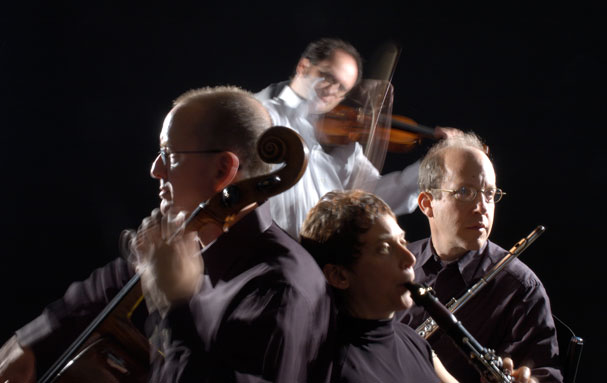
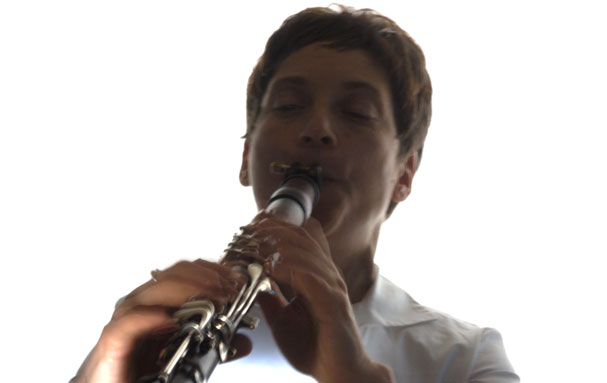
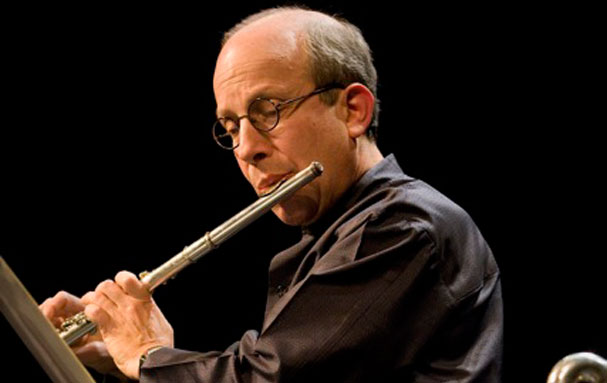
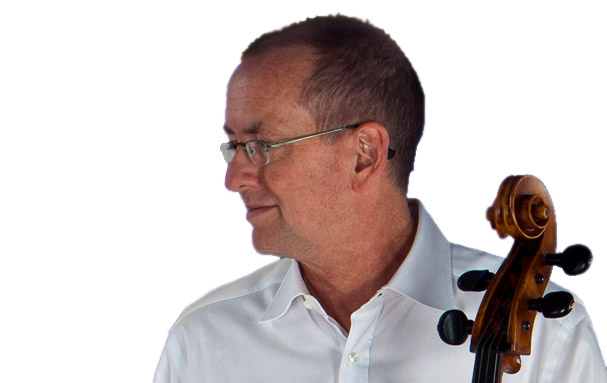
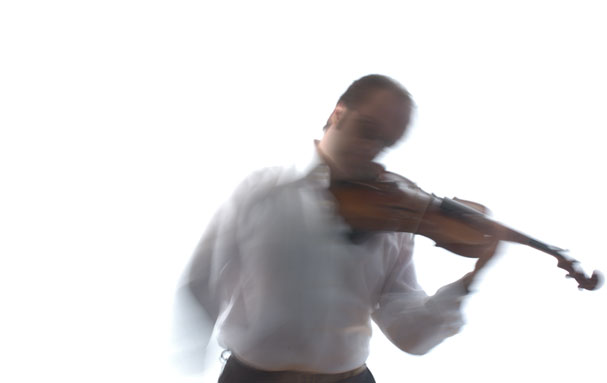
 Laura DeLuca
Laura DeLuca Mikhail Shmidt
Mikhail Shmidt David Sabee
David Sabee Paul Taub
Paul Taub